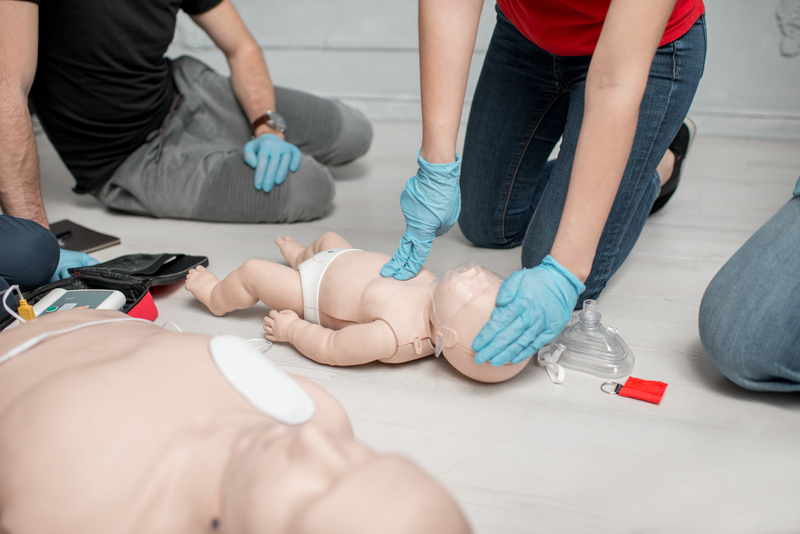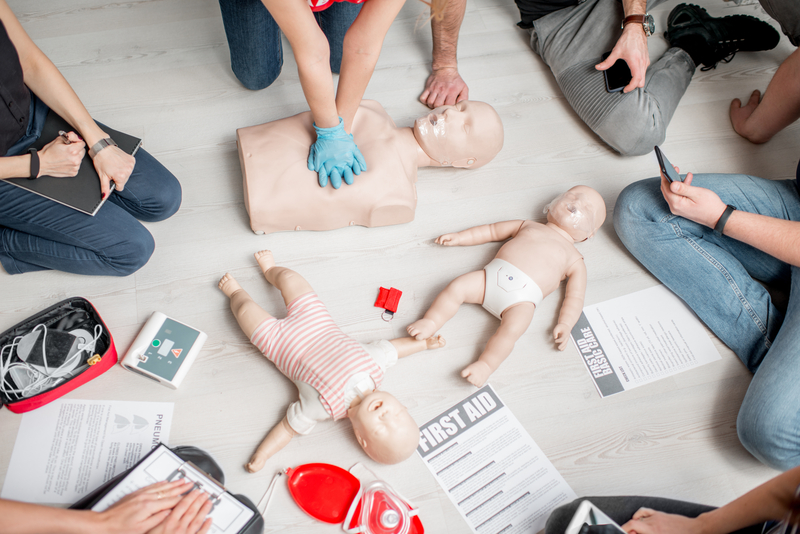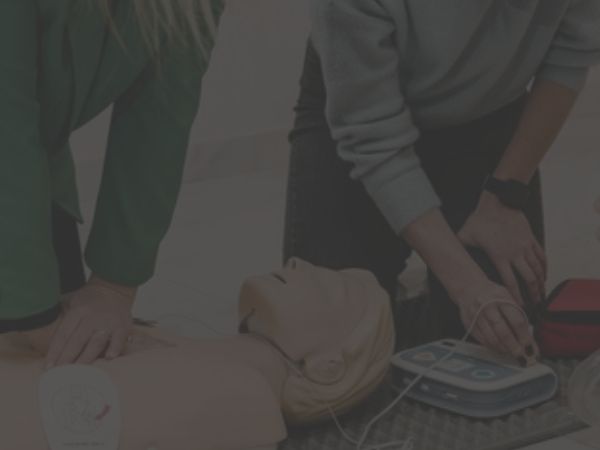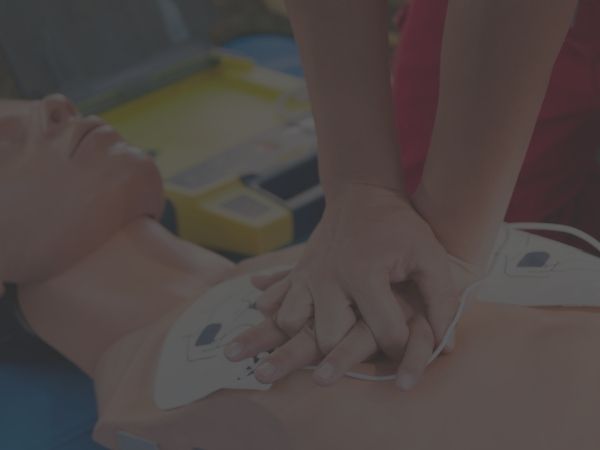Your cart is currently empty!
Infant CPR: How to Save a Baby’s Life
A baby is less than 1/15 the size of the average adult. So, naturally, you should never perform Adult CPR on an infant. Instead, to save a baby’s life, you must learn Infant CPR and how it’s different. Read on to find out!
Why is CPR Different for Infants?
 A baby’s musculature, bone density, size, and general physiology are not the same as the average toddler, much less an adult’s. Their ability to withstand chest compressions is not as robust.
A baby’s musculature, bone density, size, and general physiology are not the same as the average toddler, much less an adult’s. Their ability to withstand chest compressions is not as robust.
Sadly, too many grandparents, daycare professionals, and even medical personnel who knew adult CPR have tried to perform CPR on babies only to cause severe damage. They lacked the training to perform CPR on a baby.
For CPR, What Is Infant Vs Child Vs Adult?
An infant is a child under one-year-old. Use your best judgment if you don’t know the child’s age and they’re on the border. Child CPR is for someone who is one year old to puberty. Anyone from puberty through adulthood can handle adult CPR.
Recent ILCOR Guideline Changes for Infants
Before 2020, ILCOR guided rescuers to perform the steps of CPR on children and infants in the same order as they would for adults. If you were a single rescuer, you were instructed to call 911 before starting CPR. This changed in current ILCOR guidance and you should now start CPR before you call 911. The International Liaison Committee on Resuscitation (ILCOR.org) is an internationally-respected organization that reviews the latest medical research and establishes science-based guidelines for managing emergency medical events. Recently, they reviewed new available studies and decided to update their Child and Infant CPR guidelines based on the latest evidence. Updates like this one are a very important reason why those who have taken CPR courses in the past should take a CPR certification course every two years.
What is the Main Difference Between Baby CPR and Adult CPR?
Aside from waiting to call 911, chest compression depth is another vital skill to learn in infant CPR training:
- An adult CPR compression depth is 2 to 2.4 inches.
- A child CPR compression depth is about 2 inches. Use your judgment based on their size.
- An infant CPR compression depth is only 1.5 inches (4 cm).
- Other differences exist, but these are the two most important things to save a baby’s life.
How to Know When a Baby Needs Infant CPR?
According to Medline.gov, Signs Baby Needs CPR include:
- Not breathing
- No pulse
- Unconscious
An infant who is breathing normally, coughing, or moving does not need chest compressions.
Doing CPR on a baby who doesn’t need it, could stop the heart and (if done wrong) cause internal bleeding and even death. Instead, you should check for why they may be having trouble breathing.
How Do You Perform CPR on Infants?
Before we examine the steps, let’s explore more differences between adult and infant CPR.
What is the compression rate for infant CPR?
The compression rate for an infant is 100 to 120 beats per minute. The compression rate is the same for babies, adults, and children.
Where Do You Give Chest Compressions on a Baby?
You will compress the breast bone just below the baby’s nipple line in the middle. This is also the same for children and adults.
How Deep Are Chest Compressions on an Infant?
An infant chest compression should be no more than 1.5 inches (4 cm) deep.
How Do You Perform Chest Compressions on a Baby?
Position the infant on their back on a hard surface, like a floor or table. Uncover the chest.
Place two fingers from one of your hands on the breastbone.
Press straight down 1.5 inches (4cm) at a rate of 100 to 120 beats per minute.
Let the chest return to normal between each compression to determine the correct rate.
If you are a single rescuer, and no one is coming to help, stop only to call 911 and resume immediately before they answer. Don’t stop CPR until help arrives.
If you have a second rescuer, they should call 911 immediately. The two of you should then alternate giving chest compressions to avoid fatigue.
You can learn more about how to perform infant CPR here.
How to Give an Infant Breaths in Infant CPR?
Place your hand on their forehead and your other finger on the chin bone. Gently lift the head back.
Take a deep breath. Seal the infant’s nose and mouth and blow into the mouth for one second slowly. Note: don’t blow a full adult breath into a baby’s tiny lungs for apparent reasons.
You can learn more about giving an infant breath and using an AED in this free online CPR training course.
How to Perform CPR on an Infant (Steps)
- Ensure the scene and area around the infant are safe. Examples of hazards include loose electrical wires, in the middle of a street, in a bathtub filled with water, etc. Move the child if the area is unsafe.
- Tap (don’t hit) and shout to see if the child voluntarily responds. Never shake a baby.
- If you are a single rescuer, yell for help to see if anyone else is around and can assist and continue to step 4. If a second rescuer arrives or is there, they should call 911/ EMS and get an Automatic External Defibrillator (AED), if nearby.
- Check to see if the child is breathing. Listen, look, and feel under the nose for 10 seconds. Tilt the baby’s head back slightly unless they might have a neck injury. This may open the airway so that they start breathing normally again.
- If they are not responding and not breathing or only gasping, then the first rescuer (you) should start infant CPR. For two minutes, alternate 30 compressions and two breaths. If there are two rescuers, one should give 15 compressions and the other two breaths, alternating.
After two minutes, the first rescuer should call 911/EMS if they don’t have a second rescuer to do it. - Resume CPR, as stated in step 5 while speaking with dispatch and waiting for help. Do not stop CPR until EMS help takes over.
We want to point out that the BIG DIFFERENCE here is that we did not prioritize calling 911 over starting CPR. The same applies to child CPR. In adult CPR, which includes most teens, the opposite is true. You call 911 before beginning CPR, even if you’re a single rescuer. However, with an infant or child, don’t delay CPR.
Why Do You Not Call 911 First in Infant CPR?
An infant and child have different survival odds compared to adults receiving CPR. Starting CPR sooner can significantly improve an infant’s odds of both surviving and not suffering from brain damage.
The longer any person is in cardiac arrest, the less likely they are to survive. CPR’s goal is not to “restart the heart” as some movies might lead you to believe. It delivers a little oxygen to the brain, so that organs don’t start shutting down. This is called the “Chain of Survival” and, with proper CPR training, you can improve a person’s chances of living and making the best recovery possible.
An AED is designed to restore a normal heart rhythm in someone having a cardiac arrest. It also cannot “restart a heart” that has completely stopped, although it might appear that way to the rescuer.
Most Common Causes of Sudden Cardiac Arrest in Infants
The most common causes of cardiac arrest in a baby are:
- Choking
- Suffocation
- Asthma attack
- Poisoning
- Almost drowning
- Head trauma
- Shock
- Obstructive apnea (when body tissues such as the tongue or soft palate block airways and cause breathing to stop)
- Sudden Infant Death Syndrome (SIDS)
What Is Periodic Breathing and When to Worry?
Some babies take what are called periodic breaths. According to MyHealth.Ca, a baby may stop breathing for 10 seconds, and sometimes longer. After that, they take several quick and shallow catch-up breaths before returning to steady breathing. An attentive caregiver could see this and understandably be concerned. But this is normal.
However, if a baby does this after six months of age, it should be assessed by the child’s pediatrician. If the baby is also unconscious or turning blue, that’s not periodic breathing. You should start infant CPR as outlined in this free online infant CPR training.
CPR for SIDS
Sudden Infant Death Syndrome (SIDS) is when an otherwise healthy infant suddenly dies for an unknown reason. Doctors don’t know precisely why it happens. But according to eMedlineHealth.com, current evidence points to a delay in the development of the autonomic nervous system that manages vital functions (heart and lungs).
Regardless of why it happens, if someone with CPR training begins CPR immediately, they may be able to keep the baby’s organs from shutting down while professional help arrives.
However, time is of the essence. CPR cannot do this indefinitely because it can only deliver a percentage of what a properly beating heart can. But again, you’re giving this baby a chance they wouldn’t have without you.
How to Provide CPR on a Choking Infant?
 Choking is another top reason for a child to go into cardiac arrest. How you respond depends on the severity of choking, and “over-responding” to a mild choking event can cause a severe one. So, follow this guide for a mild obstruction.
Choking is another top reason for a child to go into cardiac arrest. How you respond depends on the severity of choking, and “over-responding” to a mild choking event can cause a severe one. So, follow this guide for a mild obstruction.
In a mild obstruction, the baby can still breathe a little. You don’t want to do something that could cause the object to get lodged further down.
During a mild obstruction, the baby is wheezing and perhaps coughing and making odd noises. If you can see what they’re choking on, carefully try to remove it. Don’t blindly swipe as you might push it further down.
Stay with the baby. Don’t move them unless in danger. And try to keep them calm as you call 911.
Remember: If they’re breathing relatively normally and moving, they don’t need CPR.
On the other hand, a severe obstruction is entirely (or almost completely) blocking their breathing. They may have a feeble cough, make high-pitched sounds (like a whistle), or be unable to make any noise.
They may be turning blue. It’s unlikely you can remove the obstruction and you don’t have time to wait for EMS to arrive.
- Put the baby face down on your arm with their head lower than their chest. Place your arm on your thigh for support.
- Support the baby’s neck and don’t hold onto their throat.
- Give them five back slaps between the shoulders with the heel of your hand.
- Turn the infant over so they are face up but still on your supported forearm with the head lower than the chest.
- Provide five chest compressions (1.5 inches {4 cm} deep)
- Repeat steps 1-5 until they start breathing again or become unconscious.
- If unconscious, start infant CPR.
Who Needs Infant CPR Training?
Anyone might need to save a baby’s life. Even teens should get CPR training. But some individuals should definitely get proper CPR training to manage infant and child emergencies like this:
- Daycare workers
- Caregivers
- Teachers
- Parents, Grandparents, Uncles & Aunts (Aunties), Older Siblings
- Friends and neighbors of new parents
- First responders
- Medical professionals
What Save a Life Courses Should You Take to Learn Infant CPR?
You can get free online CPR training now that follows ILCOR’s latest guidelines through Save a Life by NHCPS. Their courses are Joint Commission-compliant and recognized by leading medical professional certification organizations.
If you’re interested in learning infant CPR, getting your CPR certificate, or reviewing what you already know to make sure you’re current, consider these two free online courses.
CPR, AED and First Aid Course
Anyone can benefit from this course. It has detailed written instructions and videos that show you how to perform CPR, use an AED, and do first aid on infants, children, and adults. For a small fee, you can take an online test at the end to get your official CPR, AED and First Aid Certification.
PALS
Another option, intended for medical professionals but anyone would benefit from, is Pediatric Advanced Cardiac Life Support (PALS), which goes into greater depth on measures licensed medical professionals can take to manage a medical emergency in a child or infant. You can also pass an online test to earn your PALS Certification or recertification through Save a Life’s trusted online training program.
Share your wisdom and thoughts in the comments below, or head on over to the discussion about this post on Facebook.










Leave a Reply